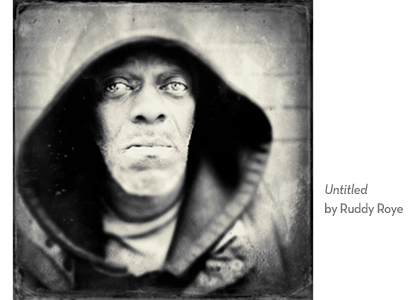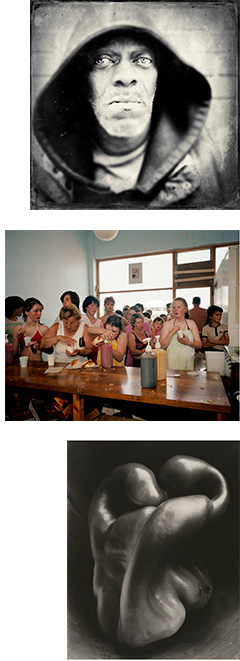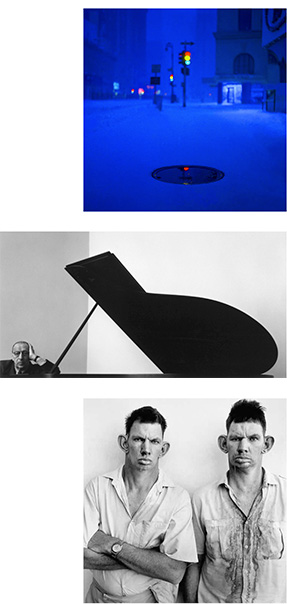

A Great Photograph
by Richard Rivera
Photographers studying outstanding photographs can learn much about the technical essentials of image making (such as dynamic range, when to emphasize contrast, how to control lighting, etc.) from both reproductions and originals, but more importantly they can gain a deeper understanding as to why one photograph is extraordinary and communicates a great truth while others merely titillate.
What criteria do we use to evaluate an image as a “great” photograph? What makes it great? Is it its technical prowess? Is it how it makes us feel emotionally? Does it gift us with a greater connection to other people or does it merely entertain our intellect? I believe that a great photograph conveys the commitment of caring the photographer has for their subject, whether it be people, nature, still life, landscape, or the future of humanity. (*The images listed and links below are excellent examples.)
The depth of caring or our passion for a subject is communicated in a fundamentally emotional, intuitive, heart-of-the-matter sense—the stronger the emotional impact of the image, the clearer the message. And simply put, the emotional impact of the image are the feelings that surface and we immediately associate with an image, as well as the thoughts and memories that emerge from that experience.
However, if as a viewer and recipient of that message, I do not care about any of these things (people, nature, art, etc.) then I will remain untouched by these images. So in a very real sense photographers create images that matter to them in faith believing that the message will resonate in the like-minded. I say in faith because there is no guarantee that the message will be well-received.
Mastering the technical aspects mentioned above, i.e., dynamic range, contrast, etc., serves to hone the message so that it is communicated in as powerful and clear a way as possible. Being more mindful of these issues and being able to focus our passion will effectively transform our perspective as photographers.
1 The Common Threads Project by Ruddy Roye
2 The Last Resort (book) by Martin Parr
3 Pepper #30 by Edward Weston
4 Times Square, 1958 by Pete Turner
5 Igor Stravinsky, New York, 1946 by Arnold Newman
6 Dresie and Casie, Twins, Trasvaal (series)
by Roger Ballen
7 Minamata, The Poisoning of A City
by W. Eugene Smith (image #13 of Takak Isayama)
8 Summer Afternoon by Arlene Gottfried
9 The Walk to Paradise Garden by W. Eugene Smith
10 El Capitan, Winter, Sunrise, Yosemite Valley
by Ansel Adams
1 The Common Threads Project by Ruddy Roye
http://ruddyroye.com/galleries/the-common-treads-project/
2 The Last Resort (book) by Martin Parr
http://www.magnumphotos.com/C.aspx?VP3=SearchResult&ALID=2S5RYDYDHEB9
3 Pepper #30 by Edward Weston
http://www.sfmoma.org/explore/collection/artwork/14685
4 Times Square, 1958 by Pete Turner
http://www.peteturner.com/index.html
5 Igor Stravinsky, New York, 1946 by Arnold Newman
https://iconicphotos.wordpress.com/2009/05/05/igor-stravinsky/
6 Dresie and Casie, Twins, Trasvaal (series) by Roger Ballen
http://www.rogerballen.com/platteland/
7 Minamata, The Poisoning of A City (series) by W. Eugene Smith (image #13 of Takak Isayama)
http://www.magnumphotos.com/C.aspx?VP3=SearchResult&ALID=2TYRYDDWZXTR
8 Summer Afternoon by Arlene Gottfried
http://www.arlenegottfried.com/new-gallery/p054do18rwncu5q8leimoo22qha4ua
9 The Walk to Paradise Garden by W. Eugene Smith
http://time.com/37534/into-the-light-w-eugene-smiths-walk-to-paradise-garden/
10 El Capitan, Winter, Sunrise, Yosemite Valley by Ansel Adams
http://www.metmuseum.org/collection/the-collection-online/search/262578
July 7, 2015
Copyright © 2015 Richard Rivera & Rivera Arts Enterprises All rights reserved. No copying or reproduction of any kind without express written permission from Richard Rivera
Legal Disclosure Camera Sense and Eagles of New York are trademarks of Elk Partners LLC


